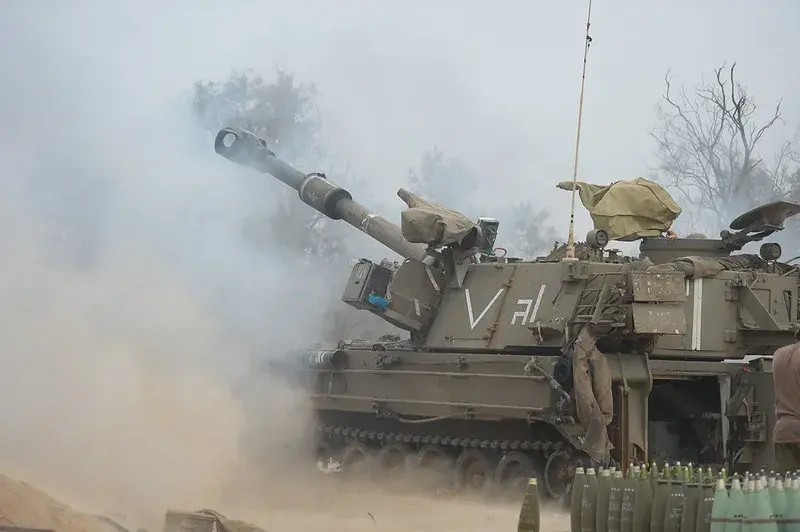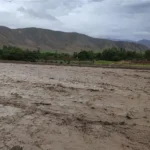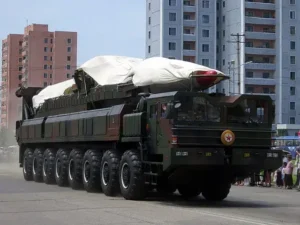Israel’s Defense Minister, Yoav Gallant, said that this move is possible due to the successful campaign in Khan Younis.

Israel prepares to redirect its military efforts towards Rafah, a move that brings the conflict closer to the Egyptian border. This strategic shift follows Israel’s claims of successfully dismantling Hamas in Khan Younis, marking a significant development in the latest chapter of the longstanding Israeli-Palestinian conflict.
Israel’s Defense Minister, Yoav Gallant, announced on Thursday that the gains made in the southern Gaza city of Khan Younis had paved the way for a potential advance towards Rafah, located at the southern border of the enclave.
The military operations in Khan Younis, where Israel initiated a major ground attack the previous week, have raised concerns about the well-being of Gaza’s civilian population. More than half of Gaza’s 2.3 million residents have sought refuge in Rafah, enduring challenging conditions in makeshift tents and public buildings, facing scarcity of essential resources, and grappling with the consequences of the conflict.
“We are achieving our missions in Khan Younis, and we will also reach Rafah and eliminate terror elements that threaten us,” emphasized Defense Minister Gallant in a statement, underlining Israel’s commitment to its military objectives in the region.
Simultaneously, diplomatic efforts for a ceasefire have gained momentum, with mediators from Qatar and Egypt anticipating a response from Hamas, which governs Gaza. This comes after the first concrete proposal for an extended halt to the hostilities was agreed upon during talks in Paris last week, involving representatives from Israel and the United States.
The proposed ceasefire entails a phased approach, with an initial 40-day period during which hostilities would cease. This period would also involve the release of civilians among the more than 100 hostages reportedly held by Hamas. Subsequent phases would address the handover of Israeli soldiers and the return of the bodies of deceased hostages.
The potential for a prolonged pause in the conflict, if accepted, would mark a departure from the intense violence that erupted on October 7 when Hamas fighters attacked Israel, resulting in significant casualties and triggering a forceful Israeli offensive that has caused extensive damage in Gaza.
Health officials within the enclave reported on Thursday that the confirmed Palestinian death toll had exceeded 27,000, with thousands more presumed dead beneath the rubble of destroyed structures. The toll on civilian lives and infrastructure has fueled international concerns and calls for an immediate cessation of hostilities.
As the proposal for a ceasefire hangs in the balance, Hamas has yet to provide a formal response. While expectations are that the group is unlikely to outright reject the proposal, sources suggest that Hamas is likely to demand guarantees to prevent a resumption of hostilities, a condition that Israel has not yet agreed to.
Amid these developments, Gaza residents continue to bear the brunt of the conflict, with Israeli forces reportedly intensifying attacks in areas around hospitals in Khan Younis and escalating their offensive in the vicinity of Rafah. Combat has also surged in recent days in northern areas around Gaza City, contradicting previous assertions by Israel that these areas had been subdued weeks ago.
Osama Ahmed, a 49-year-old father of five from Gaza City currently seeking shelter in western Khan Younis, described the situation as one of fierce resistance and relentless bombardment from air, ground, and sea as Israeli tanks advanced. “All we want is a ceasefire now,” he expressed, echoing the sentiments of many civilians caught in the crossfire.
Despite appeals from its main ally, the United States, to ease the plight of Gaza’s civilians, there is little sign of a significant improvement. The U.S. administration, under President Joe Biden, has issued an executive order addressing violence perpetrated by Jewish settlers against Palestinians in the occupied West Bank, a move indicative of increasing indirect pressure on Israel to address humanitarian concerns.
President Biden is facing additional challenges as the recent killing of three U.S. soldiers by a drone in Jordan raises tensions. This marks the first instance of U.S. casualties in an escalation of violence across the Middle East since the initiation of Israel’s war in Gaza in October. The United States, expressing concern over the origin of the drone, believes it to be of Iranian make, according to information provided by four U.S. officials to Reuters.
In response to these developments, CBS News reported on Thursday that the U.S. is considering strikes in Iraq and Syria, targeting “Iranian personnel and facilities.” The U.S. military disclosed that it had engaged up to 10 drones in Yemen, preparing for launch, while a U.S. Navy ship intercepted three Iranian-made drones and a Houthi anti-ship missile, reflecting the complex and interconnected nature of conflicts in the region.







